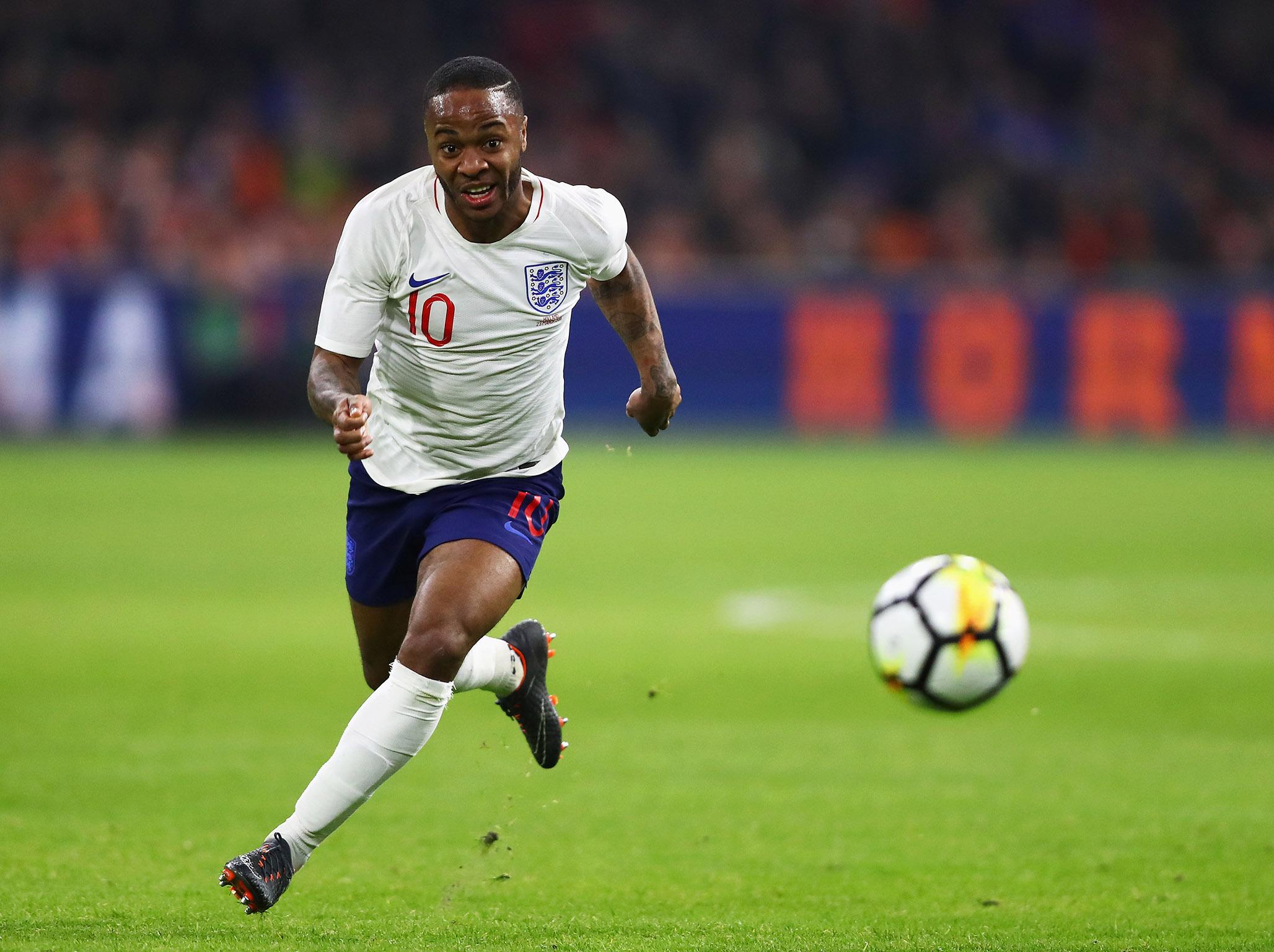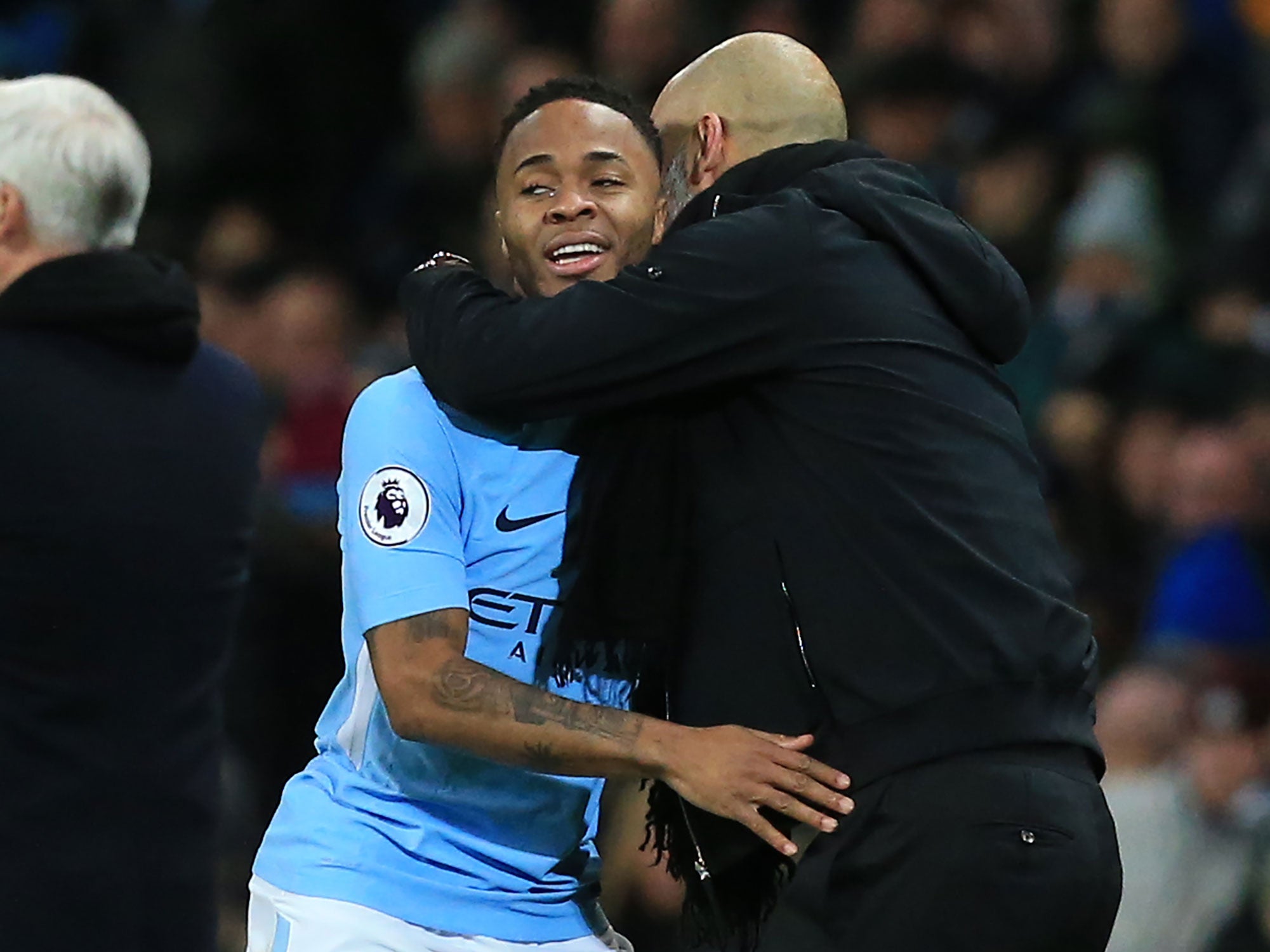How Pep Guardiola’s coaching has turned Raheem Sterling into one of England’s leading lights
Sterling has 20 goals for the season now, the best return of his career, and is showing a confidence and consistency in the final third that has always eluded him in the past

Your support helps us to tell the story
From reproductive rights to climate change to Big Tech, The Independent is on the ground when the story is developing. Whether it's investigating the financials of Elon Musk's pro-Trump PAC or producing our latest documentary, 'The A Word', which shines a light on the American women fighting for reproductive rights, we know how important it is to parse out the facts from the messaging.
At such a critical moment in US history, we need reporters on the ground. Your donation allows us to keep sending journalists to speak to both sides of the story.
The Independent is trusted by Americans across the entire political spectrum. And unlike many other quality news outlets, we choose not to lock Americans out of our reporting and analysis with paywalls. We believe quality journalism should be available to everyone, paid for by those who can afford it.
Your support makes all the difference.It is only a small detail but it says everything about the specificity of Pep Guardiola’s coaching and the little observations and improvements he wants to make in his players’ games.
Guardiola had noticed that when Raheem Sterling received the ball, he would kill it with the outside of his foot, or trap it under his boot, stopping the ball. But that would make life too easy for opposition left-backs, so Guardiola had an idea. “I would be controlling it with the outside of my foot, slowing the ball down,” Sterling revealed at the England press conference on Monday afternoon. “He’s telling you to get to the left-back quicker. He brings you back to what you used to do with the under 8s, open your body up, gets the rhythm going again.
“He’s telling you to get to the left-back quicker, open your body out and take it with you instead of just controlling it and stopping.”
For Sterling it is the simplicity of the instruction that gave it its power. “It’s simple stuff, stuff I already know,” he said. “When you’re playing a game, you probably don’t pick up on it.”
But Guardiola does pick up on these details, which is why he is the best coach in the world. This Manchester City team is proof of that, but so is Sterling, who has transformed in less than two years from exciting talent to reliably deadly forward.
Sterling has 20 goals for the season now, the best return of his career, and is showing a confidence and consistency in the final third that has always eluded him in the past. He is shooting from better positions, more centrally rather than from harder, wider angles, and Gareth Southgate has noticed better execution with his finishes too.
“You can see the confidence in him,” Southgate said of Sterling. “You can see the positions he’s taking up, his belief in front of goal, he’s scored more goals this week in training than I’ve ever seen. That’s not necessarily because he’s technically better, he’s just thinking about the types of finishes a little bit more. Not snatching at things. Passing things into the net. More confident. More composed.”

When Sterling moved from Liverpool to City he was an explosive player but not someone who always made the right decision, or who produced the end product his skills deserved. But that is changing now, thanks to the intense education of Guardiola. “I feel before I was more raw,” said a reflective Sterling. “When I got the ball I wanted to take someone on, beat someone. Now I am trying to pick my moments. If it’s on, it’s on, but if it’s not, then I try to get in the box as much as I can. That’s mainly where I am now.”
Last season, City’s lack of a quick right-back meant that Sterling had to play wide on the right much of the time, hugging the touchline to stretch the play. But now that City have Kyle Walker to play out there, Sterling can move inside and attack the opposition centre-backs, as he loves to do. That has made him more dangerous, and also struck up an understanding between Sterling and Walker that will be valuable for Southgate again this summer.
Now, when Sterling does not attack and beat opponents it almost feels disappointing. On 31 December, Sterling came on during the second half of City’s 0-0 draw at Selhurst Park but he looked tired, was not at his best and struggled to change the game. Guardiola was not impressed. “He lets you know when he’s not happy with you,” Sterling recalled. “I remember coming on against Crystal Palace. I lost the ball three times, I didn’t think I was going to play until the end of the season after he killed me in the dressing room. A manager like that brings the best out of you, when he makes sure to tell you when you’re in the wrong.”
But that intense prescriptive approach is exactly what Sterling always wanted. He struggled in his first season at City in part because of Manuel Pellegrini’s hands-off coaching, which left Sterling more or less the same player that arrived from Liverpool. He needed someone to push him, which is why he was so encouraged during Euro 2016 when Guardiola texted him to say that he would work hard for Sterling at City, as long as Sterling worked hard for him.
Almost two years on, that hard work from both Sterling and Guardiola is paying off every week on the pitch. That is going to win City the Premier League and it will give them a shot at the Champions League. Then after that, England will benefit from it too.
Join our commenting forum
Join thought-provoking conversations, follow other Independent readers and see their replies
Comments